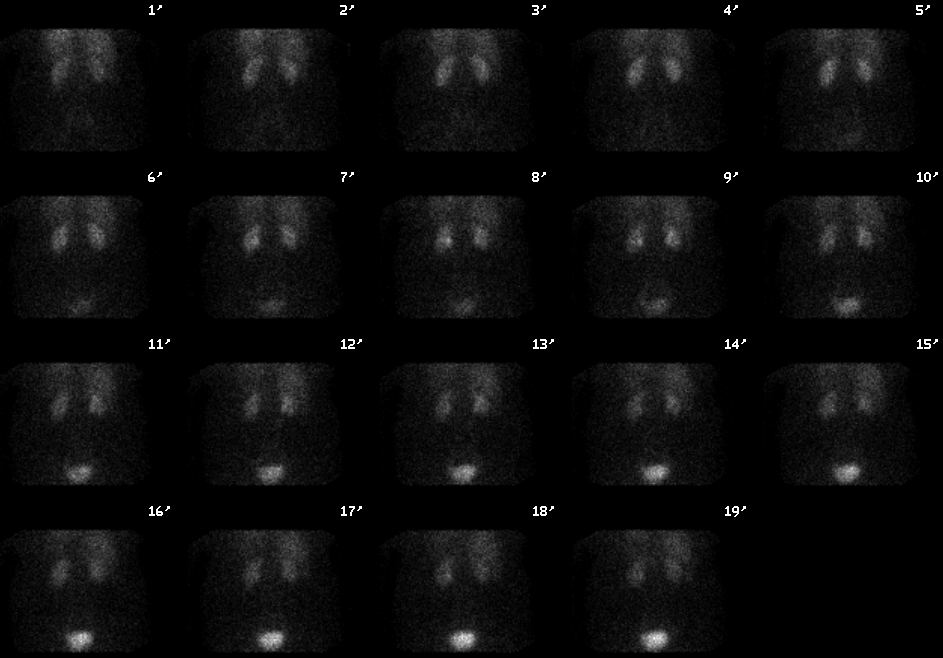Case Author(s): Samuel Wang, M.D. and Keith Fischer, M.D. , 9/22/96 . Rating: #D3, #Q3
Diagnosis: Renovascular hypertension
Brief history:
56 year old woman with poorly controlled hypertension.
Images:

Baseline posterior static images.
View main image(rs) in a separate image viewer
View second image(rs).
Baseline time activity curves.
View third image(rs).
ACE inhibited posterior static images.
View fourth image(rs).
ACE inhibited time activity curves.
Full history/Diagnosis is available below
Diagnosis: Renovascular hypertension
Full history:
This is a 56-year old patient
with hypertension which is poorly controlled
with antihypertensive medications. She also
has a history of renal failure when placed on
angiotensin converting enzyme inhibition.
Radiopharmaceutical:
Tc-99m MAG3 i.v.
Findings:
Baseline renal scintigraphy
was performed first. The flow images (not
shown) demonstrated mildly decreased
perfusion to both kidneys. There is normal
uptake bilaterally, though excretion is mildly to
moderately reduced. ACE-inhibited renal
scintigraphy using enalaprilat i.v. was then
performed. This again demonstrates normal
uptake bilaterally; however, there is now
prolonged retention of activity with markedly
delayed excretion bilaterally. These findings
are most consistent with renin-dependent renal
artery stenosis. Renal angiography
demonstrated distal small branch stenoses
bilaterally.
Discussion:
Renal artery stenosis causes
the renal perfusion pressure to decrease. In an
attempt to compensate, the juxtaglomerular
apparatus will increase production of renin.
Renin converts angiotensinogen produced in
the liver to angiotensin I. Angiotensin I is then
converted in the lungs to angiotensin II.
Angiotensin II causes preferential glomerular
efferent arterial constriction, thus maintaining
the glomerular filtration rate. Angiotensin II
also stimulates release of aldosterone from the
adrenal gland with subsequent sodium
retention and increased blood volume. ACE
inhibitors work by blocking the conversion of
angiotensin I to angiotensin II. In a
hypertensive population, the prevalence of
renovascular hypertension is approximately
0.5%. Approximately 29% of patients with
renal vascular hypertension have bilateral
stenoses.
View followup image(an).
Renal arteriogram.
ACR Codes and Keywords:
- General ACR code: 87
- Genitourinary System:
8.72 "CIRCULATORY DISORDER (PLAIN FILM AND UROGRAPHIC MANIFESTATIONS) include: renovascular hypertension exclude: in transplanted kidney (.4553)"
References and General Discussion of Renal Scintigraphy (Anatomic field:Genitourinary System, Category:Organ specific)
Search for similar cases.
Edit this case
Add comments about this case
Read comments about this case
Return to the Teaching File home page.
Case number: rs012
Copyright by Wash U MO

